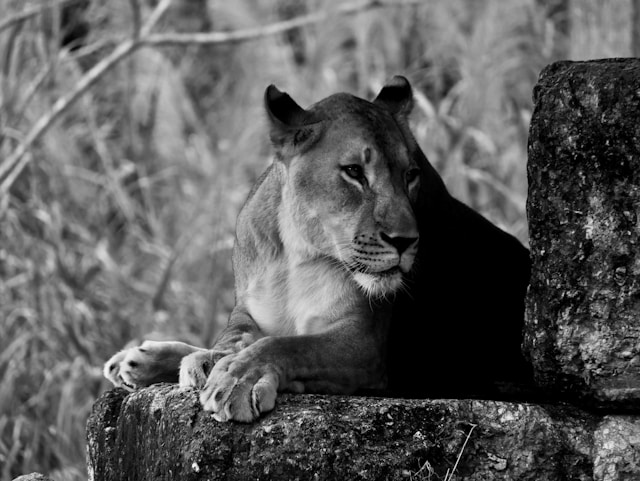Five-year-old male Asian lion, Kushanu, joins Dublin Zoo’s breeding program, sparking hopes for future cubs in the endangered species initiative
Dublin Zoo has welcomed a significant new resident: a five-year-old male Asian lion named Kushanu. This arrival is part of a broader conservation effort to support the endangered species. Kushanu, who arrived from Edinburgh Zoo in March, is now sharing his new habitat with Kamala, a nine-year-old female lion. The zoo staff reports that the two lions are forming a strong bond, and there are high hopes that they will breed and contribute to the species’ survival.
Kushanu’s arrival at Dublin Zoo is a key component of the European Endangered Species Programme, which focuses on managing the population and breeding of Asian lions. This initiative is crucial given that the International Union for Conservation of Nature (IUCN) classifies Asian lions as endangered. Current estimates suggest that only 500 to 600 Asian lions remain in the wild, primarily due to habitat loss and poaching. These lions are currently found in a single location in the wild—the Gir National Park and Sanctuary in India—which makes them particularly vulnerable to natural disasters, diseases, and human-wildlife conflicts, such as those with farmers.
Embed from Getty ImagesCiaran McMahon, the team leader at Dublin Zoo, expressed excitement about Kushanu’s future in his new home. “We look forward to hearing Kushanu’s impressive roars, and visitors can be excited to see his distinctive mane as he explores his new habitat,” McMahon said. Notably, Asian lions have shorter, darker manes compared to their African counterparts and are generally more solitary, coming together primarily for mating purposes.
Analysis:
Political:
The introduction of Kushanu to Dublin Zoo is a reflection of international cooperation in wildlife conservation. The European Endangered Species Programme, under which this transfer occurred, exemplifies a collaborative approach to preserving endangered species across national boundaries. This initiative also aligns with broader environmental policies that prioritize biodiversity and the conservation of endangered species.
Social:
Socially, the rehoming of Kushanu highlights a growing public interest in wildlife conservation and the role zoos play in educating the public about endangered species. Dublin Zoo, like many modern zoos, functions as a conservation center as well as an educational resource, helping to raise awareness about the challenges facing Asian lions and other endangered animals. This event also offers a unique opportunity for zoo visitors to learn about conservation efforts and the importance of protecting wildlife habitats.
Racial:
While the conservation of Asian lions does not directly address racial issues, it does bring attention to the global nature of biodiversity and conservation challenges. It underscores the need for inclusive conservation strategies that consider diverse cultural perspectives and prioritize equitable access to conservation resources and education for all communities.
Gender:
Gender dynamics can play a role in wildlife conservation, particularly in the context of leadership and public engagement. Highlighting diverse voices in conservation, including female conservationists and leaders, can help promote gender equity in this field. The narrative around Kushanu’s arrival can be used to discuss the contributions of women in conservation and the importance of diverse leadership in achieving conservation goals.
Economical:
From an economic perspective, Kushanu’s arrival at Dublin Zoo has the potential to boost zoo attendance, attracting visitors interested in seeing this rare species. This, in turn, supports the zoo’s funding and conservation initiatives. Additionally, the conservation of Asian lions through programs like the European Endangered Species Programme can have broader economic implications, such as promoting eco-tourism and enhancing international cooperation in wildlife management.
